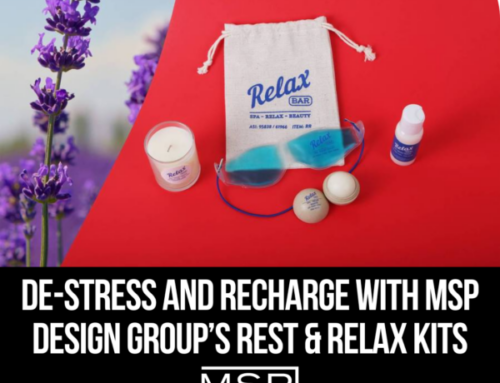
Do you have a corporate culture that feels electric, and promises an inspiring sense of purpose? Or is it felt hauntingly absent, as if your employees don’t quite know why they should be there and what they are contributing toward? Whether or not you think your current environment is successful, the truth is that a thoughtful tone of voice can make all the difference in creating cultures with enthusiasm. When companies put effort into inspiring their teams through unique yet genuine expression, without losing sight of desired outcomes, incredible employee experiences could very well result!
Keep reading to learn about how intentional use of language for company purposes can positively shape culture-building efforts.
What is the Importance of Intent in Corporate Culture?
When a company is in the early stages of development, its culture is delicate. The way that the company’s employees interact with each other and with the company’s clients will set the tone for the years to come. In order to create a lasting and positive corporate culture, it is important for the employees to have intent. Intent means that the employees are doing what they do because they want to make a difference and not just because they are getting paid.
Having intent gives employees a sense of purpose and belonging. They feel like they are a part of something bigger than themselves and they are working towards a common goal. This sense of purpose drives employees to be their best selves and to go above and beyond what is expected of them. When everyone in the company has intent, it creates a positive feedback loop where everyone is working together towards a common goal.
Intent also creates trust within the company. Employees trust that their co-workers are doing what they can to make things better and not just trying to further their own agenda. This trust allows for open communication and collaboration, which leads to better ideas and solutions.
A company with a strong culture and high levels of intent is more likely to be successful than one without those things. The employees are more engaged and motivated, which leads to better work product and happier clients. Creating a corporate culture that is built on intent is not easy, but it is well worth the effort.
How Do You Create a Culture that Reflects your Intent?
When creating a company culture, it’s important to have a clear idea of what you want that culture to reflect. Do you want your company to be fun and relaxed, or more buttoned-up and professional? Do you want your employees to be collaborative and friendly, or do you want them to be independent and results-oriented?
Your company culture should reflect your intent as a business owner. If you’re looking to grow your business, you’ll want a culture that encourages employees to take risks and try new things. If you’re looking to maintain a stable business, you’ll want a culture that emphasizes consistency and quality.
Whatever your intent, make sure your company culture supports it. Employees will take their cues from the company culture, so if it’s not in line with what you’re trying to achieve, you’ll likely have trouble reaching your goals.
How Do You Align Team Behaviors with your Intent?
When people think about team behaviors, the first thing that comes to mind is usually something like “communication” or “collaboration.” And while those things are definitely important, they’re not the only things that matter. In order for a team to be effective, its members need to be behaving in a way that aligns with the team’s intent.
What is the team’s intent? Well, that’s up to you to decide. But once you’ve decided on it, you need to make sure that everyone on the team is aware of it and is behaving in a way that supports it.
For example, let’s say your team’s intent is to “increase sales by 20% this year.” Everyone on the team needs to be aware of that goal and should be working together to achieve it. They should be focusing on activities that will help them reach their goal, and they should be avoiding anything that might get in the way of their success.
Of course, not everyone on a team is going to agree on everything. But as long as everyone is aware of the team’s intent and is working towards achieving it, then disagreements shouldn’t cause too many problems.
So how can you make sure that your team’s behavior aligns with its intent? Here are 4 things you can do:
1. Make sure everyone is aware of the team’s intent. This includes both the team members and the managers/leaders.
2. Establish rules and guidelines that support the team’s intent. These rules should be followed by everyone on the team, regardless of their position or rank within the company.
3. Encourage everyone on the team to take ownership of the goal. This means being proactive in finding ways to help achieve the goal and taking responsibility for their own actions.
4. Hold everyone accountable for their actions. This includes both team members and managers/leaders. If someone isn’t following the rules or isn’t behaving in a way that supports the intent, then they need to be held accountable for their actions.
What Do the Roles of Aesthetics and Promotional Merchandise have in Creating an Effective Culture?
A company’s culture is one of its most important assets. It can be what sets a company apart from its competitors and can make employees feel proud to work for it. There are many different ways to create a strong culture, but one of the most important is through aesthetics and promotional merchandise.
The way a company looks can be extremely important in creating a positive culture. A company that takes care in its appearance, from the way its offices are decorated to the way its employees dress, will likely have a more positive culture than one that doesn’t. This is because employees will take pride in their work and feel like they are part of something special.
Another way to create a strong culture is through promotional merchandise. This includes things like t-shirts, hats, and other items with the company’s logo on them. Giving employees these items shows that the company cares about them and wants them to feel like part of the team. It also helps to create a sense of community among employees, which can make them more productive and happier.
Aesthetics and promotional merchandise are two of the most important tools companies can use to create a strong culture. When done correctly, they can make employees proud to work for the company and help to create a positive atmosphere in which they can thrive.
How Do You Measure the Effectiveness of Culture?
Culture is important for any organization. It can be the difference between success and failure. A strong culture helps employees feel like they are a part of something, that they are working towards a common goal. It can give them a sense of identity and purpose.
A weak culture, on the other hand, can lead to employees feeling disengaged and unimportant. They may feel like they are just going through the motions, that their work doesn’t matter. This can lead to lower productivity and higher turnover.
So how do you know if your culture is effective? There are a few things to look for. First, ask yourself if employees are engaged and motivated. Are they taking initiative and ownership of their work? Are they proud to be a part of your organization?
You can also evaluate your culture by looking at key metrics such as customer satisfaction, employee retention, and profitability. If these are all high, then it’s safe to say that your culture is effective.
But it’s not just about numbers. You also need to look at the company’s values and how well they align with those of the employees. If there is a disconnect, it can lead to tension and conflict.
Creating a strong culture takes time and effort, but it’s worth it in the end. With a well-defined culture, your employees will be more productive and engaged, which will result in better outcomes for your business.
Creating and maintaining an effective corporate culture is a vital task for any organization. Your company culture should reflect your intent as a business, and this can be accomplished by aligning team behaviors with your intended goals for your corporate culture. Additionally, incorporating aesthetic elements into your workplace can play a role in reinforcing the importance of your culture to employees.




